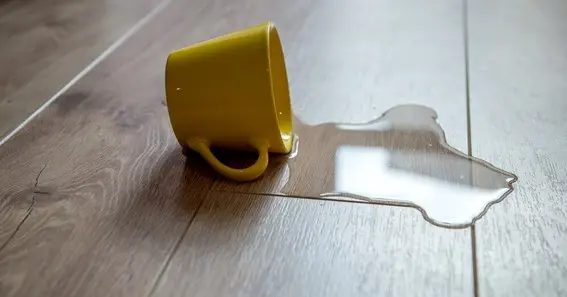What is LVP flooring? The LVP flooring looks like real hardwood or tile flooring but doesn’t cost as much or require as much upkeep. Consumers can pick from several different carpet choices. Recently, Luxury Vinyl Plank flooring has become more common. Keep reading to know more about what is LVP flooring and how is it different.
What Is LVP Flooring?
LVP flooring is a modern and elegant option for individuals who prefer hardwood flooring without spending much money. Many layers of PVC vinyl and fiberglass make up LVP. The top layer has a printed pattern that looks like real wood. Below are several layers of varying thicknesses that give it support and sturdiness. The backing layer with LVP makes installation easier than traditional hardwood flooring.
How Do You Make LVP Flooring?

Vinyl makes up most of LVP Flooring. Because vinyl composition floors last a long time and don’t scratch easily, they’re great for places in the house that get a lot of foot traffic, like entryways and living rooms. They are also simple to clean and keep up over time.
Luxury vinyl floors have changed and improved over the past ten years to offer even more efficiency benefits in the home. So much so that there is a type of vinyl flooring called “rigid core flooring” with a strong, layered polymer core for extra strength, protection against water, and even protection against sound; the core of the chosen flooring could include composite wood. Now you have read all about What is LVP flooring but does it prevent water?
Does LVP Prevent Water?

People treat LVP floors so they can stand up to places with a lot of foot traffic and the odd spill or mess. But it’s important to learn about the type of LVP flooring you choose before you put it. Some floors say they can handle water, but there is a difference between flooring that can handle water and flooring that is truly waterproof.
This is because water-resistant floors keep any wetness on the wear layer on top of the floor for a while, so the water doesn’t get into the planks’ core and ruin the floor. However, this doesn’t mean water on the floor should not be cleaned up or stopped. Even if water is on your LVP floor, you should still clean it properly. If it doesn’t say otherwise, your LVP floor should be able to handle water.
If the floor is truly waterproof, water will not damage it in any way. For example, if you want to use tile in your bathroom, you can’t hurt it with water.
Is LVT And LVP Different?

Do you know What is LVP flooring and LVP? How are they different? LVT and LVP are both types of flooring, so they are alike. The two are different, though, because of their sizes. LVT means “luxury vinyl tile”, and LVP means “plank.” You can get luxury vinyl tile in a smaller, thinner size. It might be available in a square or smaller shape, like brick. Luxury vinyl planks, on the other hand, come in longer and sometimes bigger boards. Plank flooring installation is faster than oak because it covers more space. LVP may be more expensive than LVT because it looks more expensive.
After all, it looks like hardwood. LVT and LVP are both good vinyl flooring alternatives; thus, buyers’ decisions are stylistic. Regarding effectiveness and longevity, LVP and LVT flooring are the same in the home. Customers usually choose one over the other based on their taste in design since both floors allow them to try different styles to see which works best in their room.
How Long Should You Wait Before Putting Furniture On Vinyl?

The time you must wait before moving furniture back after installation depends on the luxury vinyl flooring design. The type of flooring you buy may depend on how fast you want your home to be normal again. After a while of not being able to use a certain part of your home, it can get annoying. Installing glue-down flooring requires a delay before moving furniture back in. The main reason for this is that the glue needs time to set. The quality of the project could be affected, and the planks could move before they are fully installed if the drying process is slowed down. It’s best to wait sometimes.
Is It Good To Walk On Glue-Down Flooring?

Most makers say glue-down flooring should dry completely for 48 to 72 hours. It’s best not to walk on the floor during this time, so keep that part of the house off-limits for everyday use. Open some windows and let some airflow through the room because the glue and vinyl flooring may give off VOCs that you don’t like the smell of. It’s best to get click-lock vinyl as soon as possible so you can use your home again. There is no setting process because there is no glue, so you don’t have to wait for it to set. You can move furniture back in right away with this type of flooring.
Conclusion
You just read everything related to what is LVP flooring. Now Those seeking high-quality, low-maintenance flooring may choose LVP. LVP is strong and won’t get scratches, dents, or fade over time as other types of flooring can. Since LVP is also antimicrobial, it is a great long-term choice for homes with pets or young children. With its combination of style, durability, and affordability, LVP flooring has become a top choice for those seeking both practicality and elegance in their spaces.
FAQ
How Do I Get Ready To Put Down Vinyl Plank Flooring?
The ground under your carpet should be clean, stiff, level, and cracks-free. Remove any carpeting or old vinyl flooring, and remove the baseboards for now.
Can LVP Floors Be Wet All The Time?
However, LVP and LVT have a PVC core, which means they can handle some water but not all of it.
For How Long Does LVP Last?
For LVP flooring, on the other hand, the normal life range is only 10 to 20 years.
How Thick Should The LVP Be?
A width of 2 mm might be enough for very light use, like in a shed. For most other places, 4mm or more is a good idea.
What Will Happen If Water Gets Under LVP Flooring?
A big problem with water seepage is that it can cause vinyl planks to twist and buckle.
If Your Budget Is Low, What Should You Use LVT Or LVP?
Then go with the LVT flooring option.
How Durable Is LVP Flooring?
LVP is highly durable, resistant to scratches, dents, and stains, and is suitable for high-traffic areas in both residential and commercial settings.
Read more interesting articles here difference-between-chinese-and-japanese
Sources:
https://www.flipperswarehouse.com/blog/what-is-LVP-flooring










